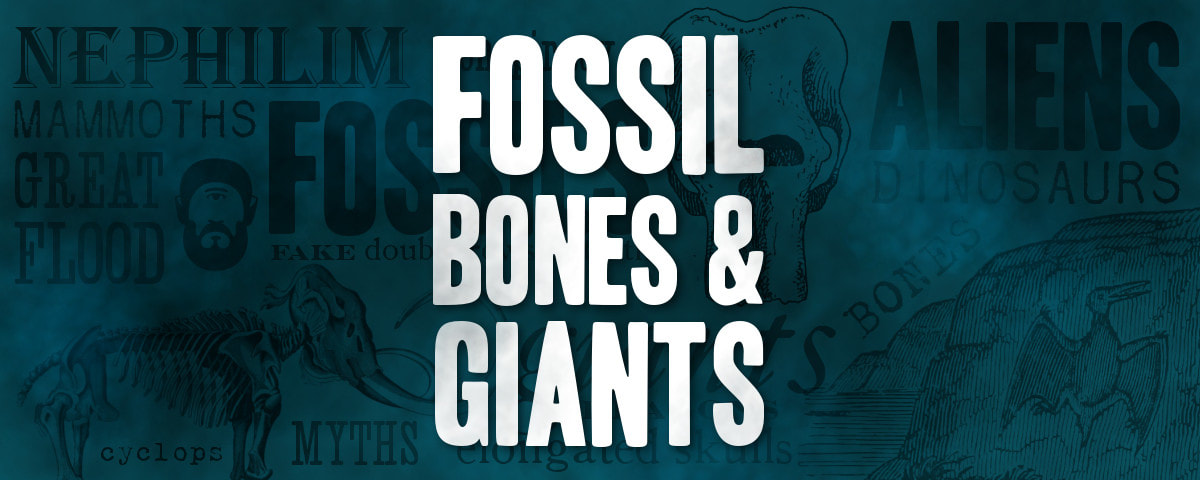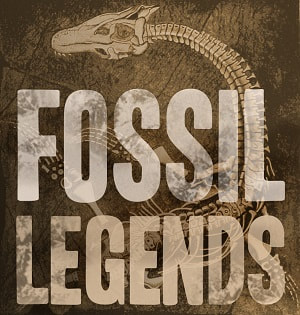James Cocke Southall
1875
|
Georges Cuvier was one of the first to propose that Classical and medieval references to the discovery of giants' bones were mistaken identifications of the fossils of extinct elephants and other prehistoric mammals. Later writers expanded on his insight, offering new and interesting details about the fossil origins of fabulous beings from myth and legend.
The following discussion comes from James Cocke Southall's The Recent Origin of Man (1875), a creationist text criticized in its own time for failing to effectively refute evolution. That said, Southall's views on the fossil origins of myth stand in stark contrast to more extreme creationists of the twentieth century who refused to accept even this minor conceit to science. Southall simply accepts as fact that pagan myth took inspiration from fossils. |
The bones of the elephant are found all over Europe at comparatively shallow depths, and it is amusing to remark now the wonder and astonishment which they excited in the minds of the ancients and even down to very recent times. The patella of a fossil elephant was believed by the Greeks to be the knee-bone of Ajax, and some great bones, no doubt those of an elephant, found in the island of Crete, are described by the naturalist Pliny, who states that they were "supposed to be the skeleton of Orion." St. Augustine found on the sea-shore "a fossil human tooth" "which was a hundred times the size of the tooth of any person living." Much later Kircher tells us of a skeleton dug up near Rome, which, by an inscription attached to it, was known to be that of Pallas (slain by Turnus), and was higher than the walls of the city. The same author tells us that another skeleton was found near Palermo, that must have belonged to a man four hundred feet high, and who, therefore, could be no other than the Cyclops,—"most probably Polyphemus." Massigli, in his History of the Danube, describes the bones of an elephant found in Transylvania, which were conjectured to have belonged to one of the elephants which the Emperor Trajan carried with him in his expedition against the Dacians.
The body of Orestes, thirteen feet in length, discovered at Tegea by the Spartans, no doubt belonged to the same respectable animal.
In 1577 some immense bones were exposed to view by the uprooting of an oak near the cloisters of Reyden, in the canton of Lucerne, in Switzerland, which the celebrated physician Platen declared to be those of a giant, whom he pronounced to be nineteen feet high. He proceeded to put the skeleton together, and sent it with an explanatory drawing to the Council of Lucerne. In 1706 the anatomist Blumenbach recognized the bones as those of an elephant. The good people of Lucerne in the mean time had adopted the image of the pretended giant as the supporter of the city arms.
The tooth of St. Christopher, shown at the church dedicated to that saint in the city of Valence, was the molar tooth of the Elephas primigenius; and M. Figuier informs us that in 1789 the canons of St. Vincent carried through the streets in public procession the arm of a saint to procure rain, which was nothing more than the femur of an elephant.
Leibnitz got hold of the bones and enormous tusks of an elephant, and constructed the skeleton of a fantastic animal which he denominated The Fossil Unicorn.
The best story on this subject, however, is that about Teutobocchus Rex, the barbarian king who invaded Gaul at the head of the Cimbri, and who was vanquished near Aquae Sextiae (Aix in Provence) by Marius, who carried him to Rome in triumphal procession. In January, 1613, the workmen in a sand-pit near the castle of Chaumont, in Dauphiny, between Montrecourt and Saint-Antoine, on the left bank of the Rhone, found a number of great bones. These were purchased by a country surgeon named Mazuyer, who gave out that he himself had made the discovery in a tomb thirty feet long by fifteen broad, built of bricks, upon which he found the inscription, Teutobocchus Rex. He added that in the same tomb he found a hundred medals with the effigy of Marius. In the bulletin which he issued, announcing his discovery, he reminded the public that, according to the testimony of Roman authors, the head of Teutobocchus exceeded in dimensions all the trophies borne upon the lances in the triumph. The skeleton of this Teutonic chief, as exhibited by Dr. Mazuyer, was twenty-five feet long by ten broad. It was carried through all the cities of France and Germany, and formally exhibited before Louis XIII., who contemplated it with the profoundest interest. It gave rise to an embittered controversy between the anatomist Riolan, who insisted that the bones were those of an elephant, and a physician by the name of Habicot, who defended the genuineness of the skeleton.
These bones are still in the Museum of Natural History in Paris. They remained at Bordeaux until 1832, when they were sent to Paris, where they were identified by M. de Blainville as belonging to a mastodon [mammoth?].
The body of Orestes, thirteen feet in length, discovered at Tegea by the Spartans, no doubt belonged to the same respectable animal.
In 1577 some immense bones were exposed to view by the uprooting of an oak near the cloisters of Reyden, in the canton of Lucerne, in Switzerland, which the celebrated physician Platen declared to be those of a giant, whom he pronounced to be nineteen feet high. He proceeded to put the skeleton together, and sent it with an explanatory drawing to the Council of Lucerne. In 1706 the anatomist Blumenbach recognized the bones as those of an elephant. The good people of Lucerne in the mean time had adopted the image of the pretended giant as the supporter of the city arms.
The tooth of St. Christopher, shown at the church dedicated to that saint in the city of Valence, was the molar tooth of the Elephas primigenius; and M. Figuier informs us that in 1789 the canons of St. Vincent carried through the streets in public procession the arm of a saint to procure rain, which was nothing more than the femur of an elephant.
Leibnitz got hold of the bones and enormous tusks of an elephant, and constructed the skeleton of a fantastic animal which he denominated The Fossil Unicorn.
The best story on this subject, however, is that about Teutobocchus Rex, the barbarian king who invaded Gaul at the head of the Cimbri, and who was vanquished near Aquae Sextiae (Aix in Provence) by Marius, who carried him to Rome in triumphal procession. In January, 1613, the workmen in a sand-pit near the castle of Chaumont, in Dauphiny, between Montrecourt and Saint-Antoine, on the left bank of the Rhone, found a number of great bones. These were purchased by a country surgeon named Mazuyer, who gave out that he himself had made the discovery in a tomb thirty feet long by fifteen broad, built of bricks, upon which he found the inscription, Teutobocchus Rex. He added that in the same tomb he found a hundred medals with the effigy of Marius. In the bulletin which he issued, announcing his discovery, he reminded the public that, according to the testimony of Roman authors, the head of Teutobocchus exceeded in dimensions all the trophies borne upon the lances in the triumph. The skeleton of this Teutonic chief, as exhibited by Dr. Mazuyer, was twenty-five feet long by ten broad. It was carried through all the cities of France and Germany, and formally exhibited before Louis XIII., who contemplated it with the profoundest interest. It gave rise to an embittered controversy between the anatomist Riolan, who insisted that the bones were those of an elephant, and a physician by the name of Habicot, who defended the genuineness of the skeleton.
These bones are still in the Museum of Natural History in Paris. They remained at Bordeaux until 1832, when they were sent to Paris, where they were identified by M. de Blainville as belonging to a mastodon [mammoth?].




